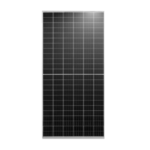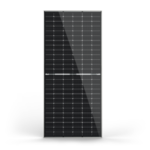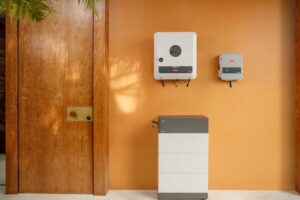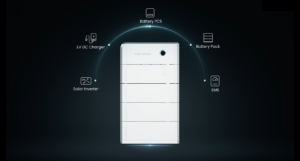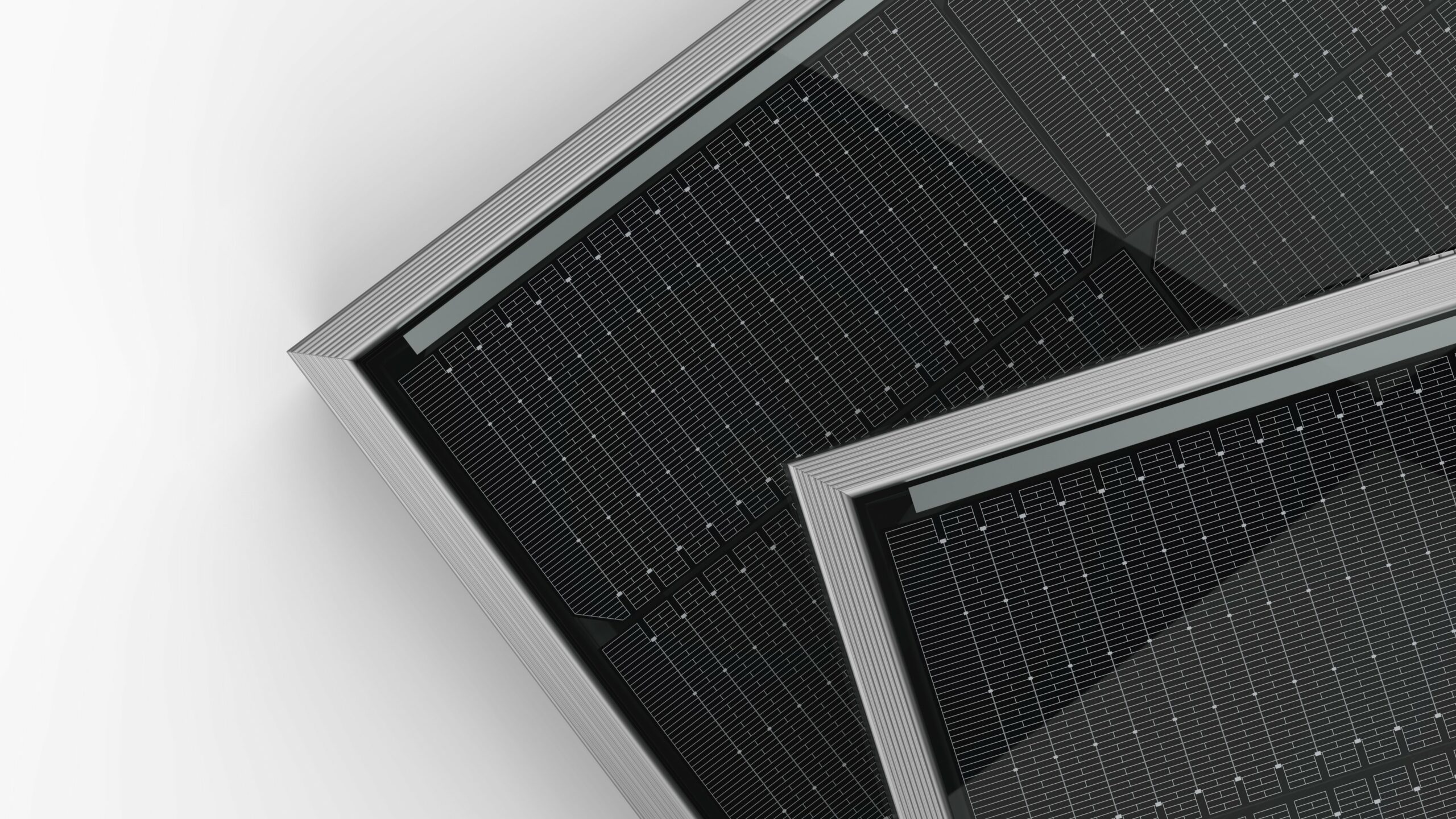
A world-leading BNEF-Tier1 listed solar panel manufacturer by volume, Jinko Solar’s 2025 range of panels can easily be refined to a core few options for those seeking an advanced solar module at a competitive price. However, specific differentiators are likely to appeal to some and not others. We’re diving deeper and discovering which Jinko Solar panels you should consider in 2025 for a more informed, sustainable energy investment decision for your home.
Contents
Key points
- N-Type solar panel options
- PV Moduletech AAA-rated and BNEF Tier-1 manufacturer (bankability)
- Multi-national automated manufacturing
- Good affordability
- Larger power classes are not a technology improvement
Compared to previous years, this year’s Jinko solar panels are more distinguishable under two primary categories: the Tiger Neo and the Tiger Pro series. For residential energy purchasers in Australia, smaller formats of the Jinko Tiger Neo (54 half-cell version) refine the selection to two solid options. Away from the marketing fluff of “bigger is better,” concentrate on the technical specifics (we’re here to help if needed) and ensure the most suitable Jinko solar panel selection for your home based on characteristics and features.
Rewinding things a fraction, Jinko commenced the decade with one of the most distinguished international sustainable energy awards, the European InterSolar 2019 innovation award. Since then, the Jinko solar panels installed in Australia have often had their industry-leading twist that sets a mainstream standard. 2025’s line-up of Jinko Solar panels looks set to continue with the N-Type TOPCon as the architecture of choice.
Which to consider
2025 is the year of the snake on the Chinese zodiac. But for Jinko, they will enjoy another year of the Tiger. However, the next step is to discern beyond power class—because bigger isn’t always better.
Efficiency is the simplest way. A solar panel rated at a greater power output (475 or 510 W) with an efficiency of 20-22.5% is a larger solar panel occupying the same surface area on the roof as their lower Watt (440W) counterparts of 20-22.5% efficiency to make up the system size: 6.6, 10, 13 kW etc. In a world of marketing hype and sales tactics, you must consider alternative differentiators for your ideal sustainable energy solution. These Jinko Solar panels are the optimal panel class in 2025, away from potentially misleading hype, while maximising your energy systems performance and solar subsidy without batteries.
If you genuinely want a high-power output module, Jinko solar panels with greater power output exist. However, these aren’t the models you’ll want to consider for a residential solar installation due to mismatched electrical characteristics that are better suited for commercial and utility-scale solar inverters. All Jinko solar panels available in 2025 are close equivalents of each other, with the overall variation being dimensions, equaling weight for a more simplified comparison scope.
The Jinko Solar panels below ensure the perfect system balance for maximum oversizing and subsidy allocation for most small-scale residential and light commercial buildings in Australia.
Residential suitability: (order) Most ideal to least.
1. Jinko Tiger Neo Bifacial Dual-Glass (440 W): It’s the streamlined all-black, dual-glass reinforced counterpart of Jinko’s highest-selling module in Australia (the Tiger Neo). Jinko’s Tiger Neo Bifacial now reaches mass market affordability with added benefits. This Jinko solar panel comprises dual-glass construction plus bifacial module architecture for a little extra kick (it absorbs light from the front and rear surfaces of the solar panel). However, don’t expect significant gains without the albedo effect in full effect—mounted flat on your roof. If you’re seeking an improved aesthetic appeal and the most significant technology attributes from a particular Jinko Solar panel in 2025, the Neo Bifacial is one of their finest. -0.28%/°C temperature coefficient further defines this module from the pack.
2. Jinko Tiger Neo 54HL4 (440 W): Is the most popular model by units sold in Australia, an ultimate all-rounder. Jinko’s Tiger Neo base model solar panel offers outstanding cost attributes while being delivered by one of the world’s most bankable solar panel manufacturers for improved warranty assurance. With a matching efficiency (22%) with most other models in their fleet plus an assisted -0.29%/°C temperature coefficient, purchasers can enjoy sound generation in temperatures above 25°C. The reduced format dimensions of the Jinko Tiger Neo 440W 54-cell solar panel make it one of the most accommodating Jinko Tiger Neo models for residential rooftops. More than 2 million 440W Jinko Neo solar panels harvest Australian sunlight daily.
3. Jinko Tiger Neo 60HL4 (475/510 W): When a better option exists in the Neo 54HL4, avoid using the inflated Neo 60HL4 variant unless necessary. Jinko’s oldest model in the fleet supports the most significant overall dimensions—the Tiger Neo 60HL4 launched in 2021 as their flagship N-Type TOPCon solar panel for commercial-scale projects. At over 24 kg, it becomes more contentious around expansion and maintenance capabilities. The Jinko 475W (soon to be 510W) Tiger Neo was once the most reduced format version in the Neo range, with a commercial target market. It is the ideal multiplier for small-scale projects to maximise subsidy potential and the ultimate array for inverter oversizing. Remain cautious of salespeople promoting this as Jinko’s best solar panel because of its higher power class.
4. Jinko Tiger Neo (+570 W): Jinko Tiger Neo models greater than 570W aren’t suitable for residential installations in Australia due to size, weight and electrical characteristics.
5. Jinko Tiger Pro (+550W): The Jinko Tiger Pro is now only available in +550W models. Similar to the Jinko Tiger Neo 570W+, its size, weight, and electrical characteristics are not suitable for residential installations in Australia.
Perth’s Jinko Experts & locals you can trust. Triple ISO-certified. NETCC-approved seller.
What is the warranty
The warranty between Jinko Solar panel models is more straightforward when comparing residential models in Australia. N-type (negatively charged) TOPCon Jinko Solar panels enjoy the most significant 25/30 warranty due to a module architecture with the likelihood of reduced degradation over the lifespan. Positively charged Jinko solar panels (P-type) in the form of Tiger Pro possess a reduced format product and performance warranty that is more likely to suit an industry-backed project’s intended lifespan.
- Warranted maximum power output degradation within a nominated period at Standard Test Conditions.
- Annual warranted maximum power output degradation at Standard Test Conditions beyond year 1 for the remaining performance warranty period.
Where are they made
Listed on the New York Stock Exchange (NYSE: JKS) and a Silicon Modules Super League member, Jinko operates a broad network of manufacturing plants internationally (China and U.S.A). However, the Jinko solar panels all Australian customers receive come from Jinko’s automated manufacturing facilities in China.
As manufacturing modules are only one process element, Jinko solar cell manufacturing occurs in Jinko plants across China, Vietnam and Malaysia.
A sign of global progress ahead of the manufacturing curve. In 2019, Jinko began manufacturing solar modules from a newly constructed $50 million, 400-megawatt plant in Jacksonville, Florida (USA). They have since been awarded a local grant and the ability to upgrade the facility by another $52 million.
With a view to increase their current 70% market share in the Middle-East. From 2026, Jinko Solar’s global footprint will continue with a newly constructed 10-gigawatt manufacturing plant. Further defining a Middle Eastern market power play with a significant manufacturing footprint out of Saudi Arabia.
What do they cost
Expect good value for the efficiencies available. Solar system prices incorporating Jinko solar panels will vary depending on module model selection, inverter selection, battery selection (if required) and other installation specifics. After the current zone 3 STC subsidy (Perth & Bunbury region), the average costs for a Jinko solar energy system (without batteries):
1. Average cost per kW installed (after STC value deducted as a point-of-sale discount), considering average inverter cost compatible with the Example System Size, and based on values relevant within 30 days of the article post date.
Ensure these Jinko Solar panels and their listed prices are our best. Get your copy of the latest Perth Solar Warehouse catalogue.
As the most common small-scale system size (residential), a 6.6 kW system is an example. Considering all inverter types, the average cost is divided to provide an Average Cost per kW. The Average Cost per kW can be multiplied by any nominated system size for general system cost guidance. This content is not a substitute for a quoted price.
Quick links: Common alternative system sizes (with prices): 3 kW, 10 kW, 13 kW or 19 kW.
Hassle-free solar. Locally proven, Perth Solar Warehouse. Google & SolarQuotes 4.9/5
Recommended pairing options
It’s one thing to know which Jinko solar panels to consider, this is only ever half the equation. Some know precisely their inverter or battery preferences. But for those seeking further inspiration, try these popular product pairings to ensure a future-ready energy system.

Standard Inverter: Goodwe DNS-G3 or SDT-G2. It’s hard to ignore Goodwe as an inverter consideration. It may exist at the more affordable end of the inverter spectrum, but it just works. Great software, outstanding local support and a solid reputation. Goodwe builds solar inverters that a lot of people really like and their market share suggests that.
Review: How good is a Goodwe inverter for your solar project
$$

Hybrid Inverter: Sigenergy’s SigenStor is set to be the most disruptive sustainable energy solution of 2025. If you’re not ready for batteries just yet, why not start your new Jinko solar panel system with just the Sigenergy hybrid inverter? Single and three-phase options, seriously good AI-driven software, bidirectional EV charging options, best value per kWH modular storage options and currently one of the safest home battery solutions. Sigenergy is game-changing, and installers around the world love it.
Review: Sigenergy’s ‘SigenStor’ is a game-changer for Australia
$$$

Hybrid inverter: Fronius GEN24. When you occupy 20% of the Australian inverter market share, there’s a good level of trust when it comes to Fronius. Over the last decade, Fronius has earned a reputation for building dependable solar inverters, leading the way in European ingenuity of energy ecosystems with the new release of the Fronius GEN24 range.
Review: Is a Fronius inverter worth the extra expense
$$$$
Which is ideal for you
If you’re seeking an ultra-high-performing and warranted long-term investment in the latest cell technology, consider the Tiger Neo 54HL4 range of Jinko solar panels. These are best suited to residential rooftops and technician safety. With an increased footprint and less-standard electrical characteristics, these larger Jinko solar panels may prove more difficult to maintain or expand capabilities in the future. Leave the Neo 60HL4 models for commercial-grade rooftops that can better support the personal capabilities, increased dimensions and centralised weight, not your home.
Thinking about visual aesthetics? the Tiger Neo Bificial, with the same performance characteristics and power output as the Jinko Tiger Neo 54HL4, combined with all-black mounting hardware, offers a superior streamlined appeal, while generating high power output in more adverse conditions.
Due to increased small-scale system design flexibility, long life expectancy, and outstanding value for the overall technology, Perth Solar Warehouse recommends the Jinko Tiger Neo 440W 54HC4 or the Jinko Tiger Neo Bifacial 440W solar panel for residential Jinko solar energy system designs.
Through appealing to a broad scope of decision-makers and project purposes, Jinko is now one of Australia’s most adopted solar panel brands. Promoting high adoption sustainable energy generation through now one of the world’s most bankable solar module brands. It’s an alluring proposition for anyone.
Seeking a specific Jinko Solar product? As a proven Jinko-certified installer based in Perth, Western Australia, Perth Solar Warehouse sales support can assist.



